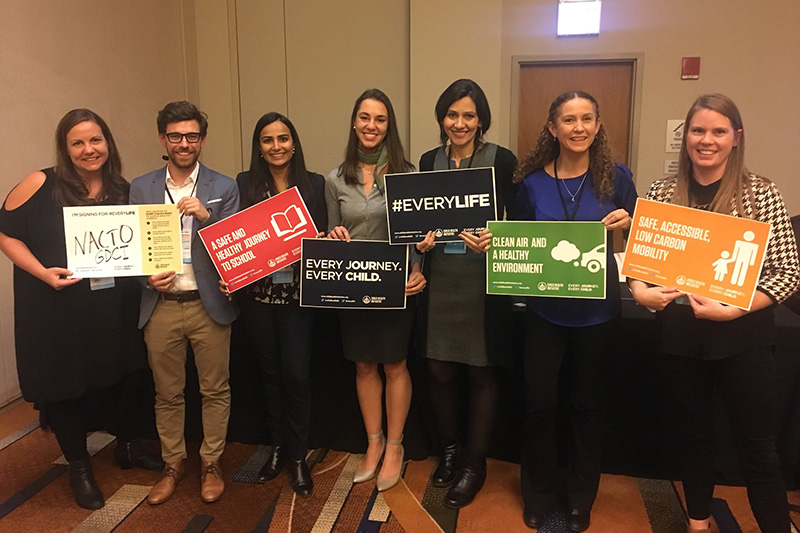Designing Cities conference echoes #EveryLife call for child health rights





At the annual National Association of City Transport Officials Designing Cities conference, urban planners, designers, and practitioners gathered to share experiences in making cities safer, healthier, more livable, and more equitable. Echoing the #EveryLife campaign, the conference included a focus on achieving these goals by starting with children.
“Transportation is the history and future of this city,” said Chicago Mayor Rahm Emmanuel in the opening plenary of NACTO’s conference. The conference, held 30 October to 2 November in Chicago, focused on the future, and the generation most disproportionately affected by poorly designed cities – children.
Designing streets with children in mind not only protects them, but also offers the opportunity to help them thrive. Around the world, NACTO has been returning streets to people, and to children, by implementing their Global Street Design Guide. “With the help of our guide, we’re taking the old approach to city street design, where the car is king, and flipping it on its head. We’re returning the streets to the people, to cyclists, and to our future – our children. We’re building on global momentum to make streets healthier and safer for children by working towards a guide supplement, to design streets for children,” said Skye Duncan, Director of the Global Designing Cities Initiative. The guide is being implemented in ten cities around the world with the support of the Bloomberg Philanthropies, and in many others thanks to the Global Expert Network of 150 members from 72 cities in 42 countries.
NACTO recently signed on to the Child Health Initiative’s #Every Life Declaration of Every Child’s Right to Safe and Healthy Streets. “Hosted by the FIA Foundation, the Child Health Initiative launched the Declaration, which Mayors and citizens around the world are signing on to. They are reminding us that cities have the power to change the rising trend in road traffic crashes, starting with children,” said Natalie Draisin, North American Director for the FIA Foundation, speaking as part of the “Designing Child Friendly Safe Streets,” panel focused on incorporating the perspectives of children into urban street design to ensure safety and promote healthy childhood development.
On the panel, Cecilia Vaca Jones, Programme Director of the Bernard Van Leer Foundation and former Minster of Social Development of Ecuador said, “If children can get around safely, efficiently, and comfortably, it’s a good indicator that most other residents can too. Children are more vulnerable to air pollution. If they are suffering, they are not alone. The way we design our streets is the difference between a child surviving, and a child thriving.”
Representing Bernard Van Leer Foundation’s Urban 95, named for a child’s perspective at 95 centimeters tall, Irene Quintans talked about designing streets with schools, libraries, clinics, supermarkets, and other areas that families visit together with proximity in mind. “Proximity isn’t just about the distance between one point and another, it’s about safe, accessible, and healthy spaces. Otherwise, proximity can become hostility.”
The conference plenary also highlighted the Vision Zero for Youth leadership award, recently given to the city of Los Angeles. Vision Zero for Youth is a movement to help cities adopt Vision Zero, by starting with winnable battles to prevent road traffic fatalities among children, or to urge cities with existing Vision Zero efforts to focus on children. Announcing the award, Seleta Reynolds (main picture above), General Manger of the Los Angeles Department of Transportation, emphasized the foundation for success of Vision Zero for Youth, and other efforts highlighted throughout the conference: “Cities get stuff done.”







